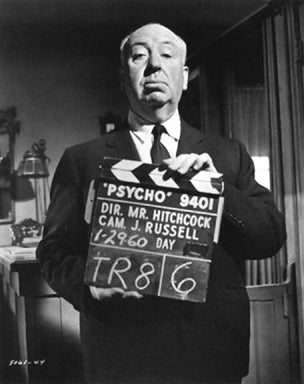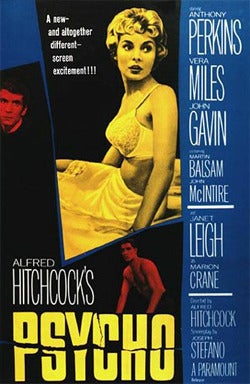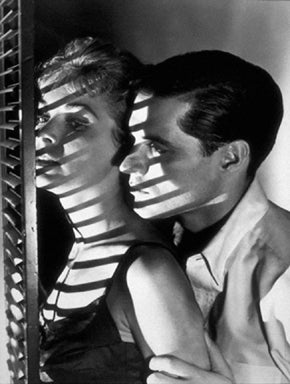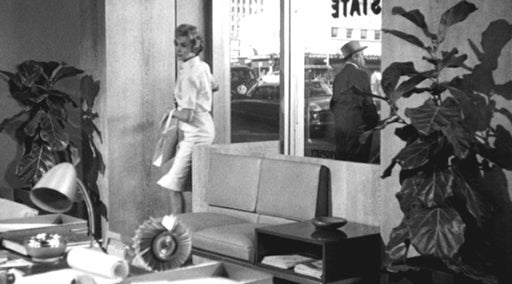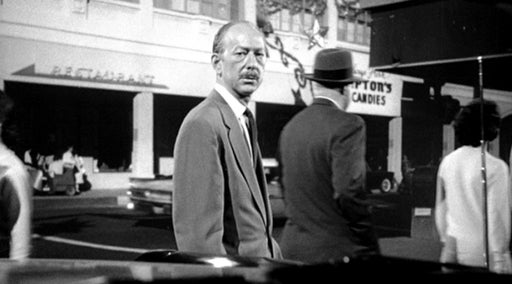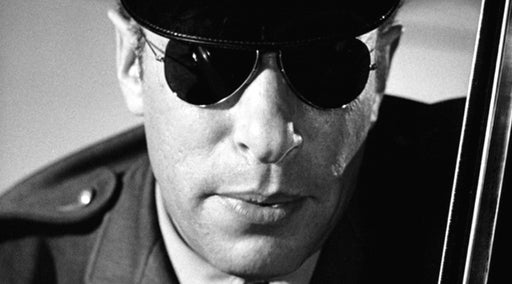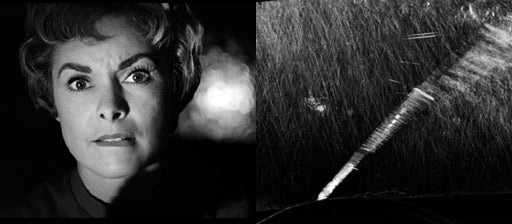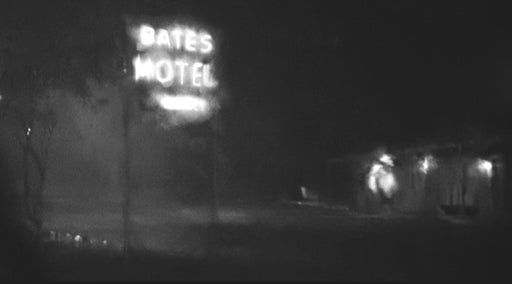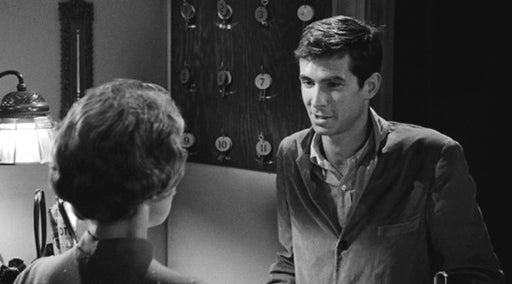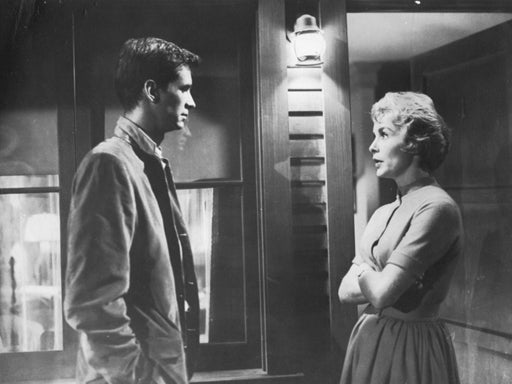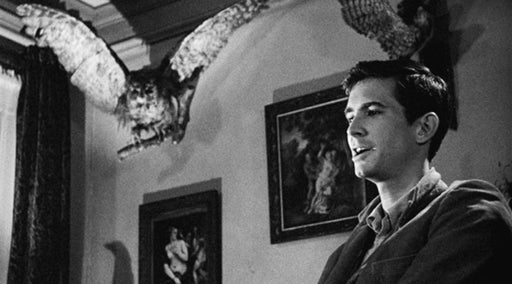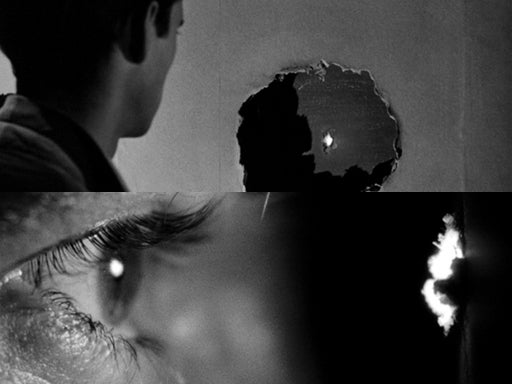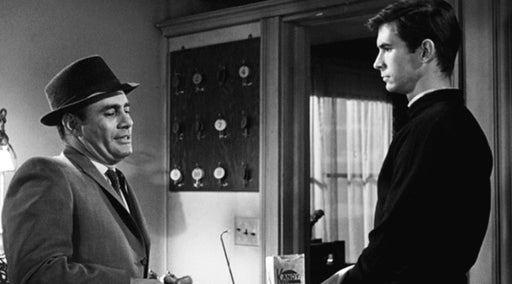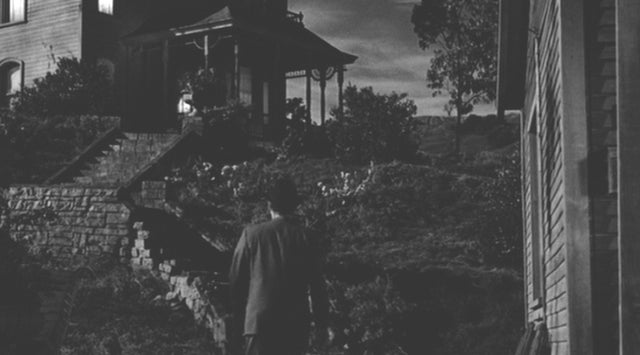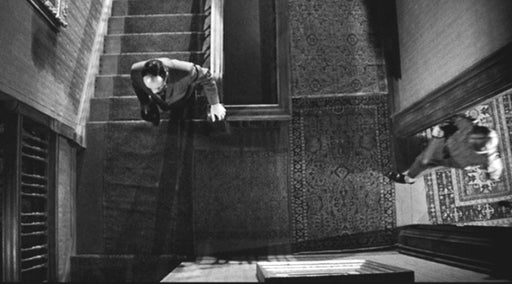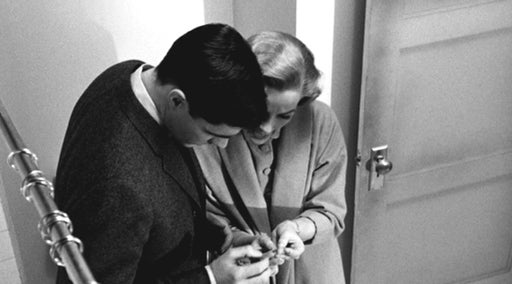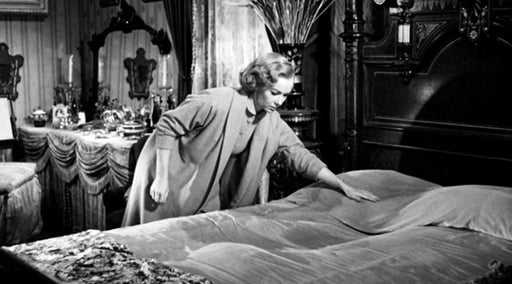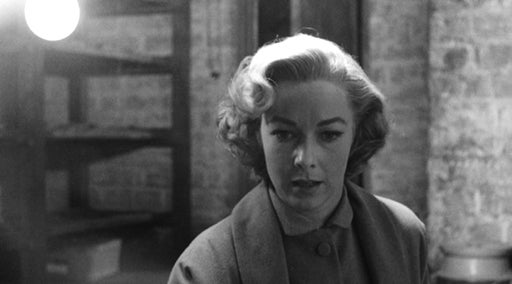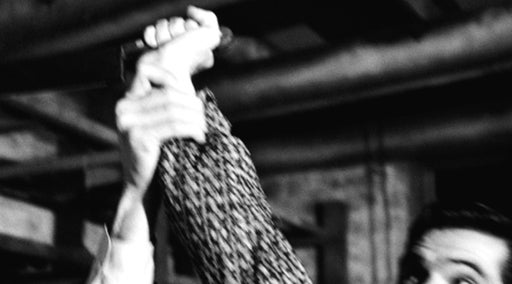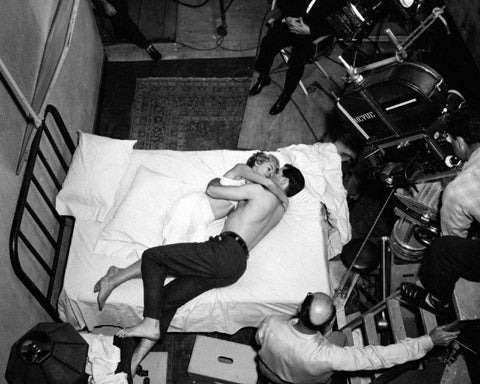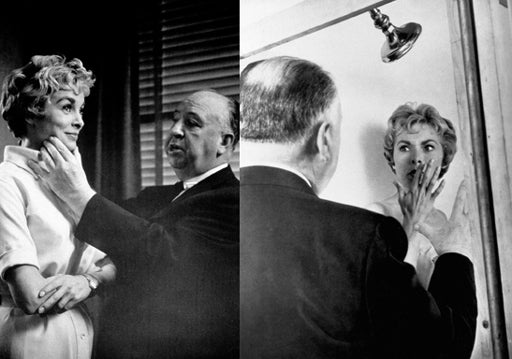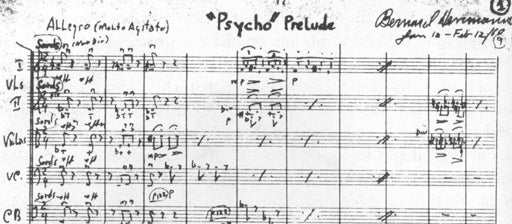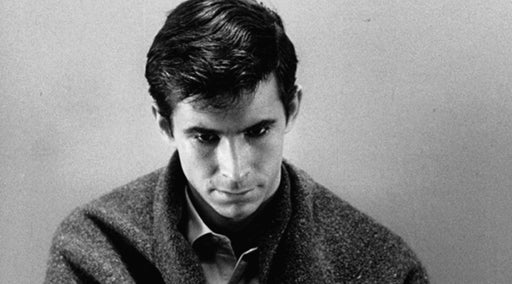Alfred Hitchcock's "Psycho"
Some of the highest art comes from the lowest of sources. In the case of the 1960 film "Psycho" by director Alfred Hitchcock, a tale of murder and taxidermy inspired by the notorious mass murderer Ed Gein became one of the most celebrated cinematic exercises in suspense ever created. (Spoilers ahead!)
By CBSNews.com producer David Morgan
Publicity shots, on-set photography and frame grabs from the Alfred Hitchcock Wiki and its "1000 Frames of 'Psycho.'"
The Master of Suspense
Hitchcock had already established himself as a master filmmaker and a recognizable figure from his TV series, "Alfred Hitchcock Presents." Originally from England, where he created a string of popular mysteries capped by "The 39 Steps," he arrived in Hollywood in 1940; his first American film, "Rebecca," won the Oscar for Best Picture. He became renowned for his psychological tales of mistaken identities, espionage, romantic longing, and murder most foul.
Poster
By the mid- to late-1950s, with his masterworks "Rear Window," "Vertigo" and "North by Northwest," Hitchcock was ready to try something different.
Illicit Lovers
Unlike the glossy studio entertainments that had preceded it, "Psycho" was a low-budget thriller whose ad campaign promised violence, sex (courtesy of Janet Leigh and John Gavin, as a pair of illicit lovers), and deviance. To preserve the plot's twists, patrons were prevented from entering once the show started.
Cameo
Hitchcock's trademark cameo, in which the director is seen through the window of Marion's office. The director always managed to insert himself into his films — earlier and earlier so that audiences could get "finding him" out of the way.
The Crime
Master showman that he was, Hitchcock pulled a true bait-and-switch with the narrative, leading audiences to believe that the story centered on a desperate woman fleeing her Arizona city after embezzling money.
Discovered
The film builds on emotions of fear about being detected or found out, as Marion Crane drives away with a bundle containing $40,000. When she is spotted by her boss (in a typical Hitchcockian process shot, reflecting the director's distaste for shooting outside studio walls), Marion's adrenaline rush propels her towards an unconvincing safety.
Traffic Cop
On the road she is confronted by a policeman. (Hitchcock had an exaggerated fear of cops, and it shows here.)
Driven
Lost and caught in a torrential downpour, Marion pulls her car off the highway.
Bates Motel
She comes upon the secluded Bates Motel, long divorced from a steady stream of customers after the opening of an interstate. But any port in a storm . . .
The Proprietor
The empty motel is run by Norman Bates (Anthony Perkins), who lives in the adjacent house with his aging mother. Norman is friendly but appears somewhat discombobulated by the presence of Marion. He suspects she may be running from something, or someone, but happily offers her accommodation.
A "Private Trap"
In their brief conversations, Marion seems to lose some of her fear about returning to Phoenix, to evade a trap of her own making by being on the run.
Taxidermist
NORMAN: "You know what I think? I think that we're all in our private traps — clamped in them. And none of us can ever get out. We, we scratch and claw, but only at the air, only at each other. And for all of it, we never budge an inch."
MARION: Sometimes we deliberately step into those traps.
NORMAN: I was born in mine. I don't mind it anymore.
MARION: Oh, but you should. You should mind it.
NORMAN: Oh, I do (laughs) but I say I don't.
Voyeur
The audience also sees Norman as a voyeur who poses a potential threat. Hitchcock's use of a subjective camera, to place the viewer in the shoes of those onscreen, was one of his strongest gifts in creating an emotional connection between the characters and the audience, and in heightening suspense.
Shower Scene
As Marion takes a shower, signaling her willingness to "come clean" and return to her life, she is fatally attacked by Norman's mother, who bursts into the bathroom with a large knife and relentlessly strikes at the defenseless woman. The shock and horror of the scene — unmatched at the time for its brutality, despite never showing more than a trickle of blood — was a masterful display of editing and music. The 3-minute sequence, which Hitchcock created with title designer Saul Bass, took a week to shoot, and was edited by George Tomasini and accompanied by the stinging violins of composer Bernard Herrmann.
Discovering the Body
Upon discovering Marion's body, Norman's expression shows revulsion, but his eyes betray to us a sickening realization — that perhaps this is not the first time he has come upon the product of his mother's wrath.
Burying the Body
Dutiful son that he is, Norman cleans the mess, loads Marion's body and possessions in the trunk of her car, and sinks it in a nearby swamp.
The Private Eye
But Marion's disappearance soon leads a private investigator named Arbogast (Martin Balsam) to come asking questions.
On the Trail
Smelling that he is on the trail, the detective walks to the house, to find out if Mrs. Bates has any clues as to Marion's whereabouts.
Murder
After a long walk up the staircase, Arbogast is startled by the figure of Mrs. Bates lunging at him from her bedroom with a knife. He meets his demise as she sets upon him, stabbing and stabbing.
A Clue
Using information provided by Arbogast, Marion's lover Sam and her sister Lila (Vera Miles) arrive at the Bates Motel where, posing as a couple, they search the rooms. Finding evidence that Marion was there, Lila ventures to the house to talk to Mrs. Bates while Norman is being sidelined.
Mother's Bedroom
Having been moved down to the basement by her son, Mrs. Bates is nowhere to be seen as Lila enters her room.
The Basement
Hiding from Norman (who has grown suspicious), Lila enters the cellar where she finds Mrs. Bates — sitting in a chair and refusing to answer.
The Murderer
Again, Hitchcock pulls a bait-and-switch, and the tale of a murderous, possessive old woman becomes even more sinister and darker — and, in the depths of a confined, dimly-lit basement, more terrifying.
On the set
The film was shot using much of the crew from Hitchcock's TV series, and his stars received reduced fees. Still, Paramount balked at funding the picture (believing the sordid material would never be profitable) until Hitchcock offered to defer his director's fee in exchange for part ownership. Paramount eventually sold the film to Universal (where it was shot), and the Bates Motel is today a feature on the studio tour.
Hitchcock and Leigh
Hitchcock loved the idea of subverting the audience's expectations by killing off the star so early in the film. Janet Leigh's death halfway through meant that her carefully registered performance — expressed mainly through the eyes, often directly into the camera — was relegated to the Supporting Actress category when she received an Academy Award nomination for her work. Prior to "Psycho," Leigh had starred in "That Forsyte Woman," "The Naked Spur," "Houdini," "Pete Kelley's Blues," and "Touch of Evil."
"Black and White" Music
If ever there were a travesty in Oscar history, it was that Bernard Herrmann's strings-only score — a landmark in 20th century music — was not nominated. Offering what he referred to as "black and white" tonalities, the opening title music (the driving music that also accompanies Marion's desperate escape) is frenzied and unsettling. But the capper was the murder music — striking, high-pitched attacks with the bow that sound almost like Norman's birds.
PLAY AN EXCERPT FROM "Psycho: Opening Titles"
Norman
Anthony Perkins, whose previous film roles included "Fear Strikes Out," "Green Mansions," and playing a Quaker in "Friendly Persuasion," gave a career-defining performance as Norman Bates — a delicate balancing act of docile innocence, shyness, guilt, vengeance and rage, all dancing on the precipice of madness. He returned to the character in three sequels, one of which he directed.
Mother
The film's look was partly inspired by the French thriller "Les Diaboliques," but "Psycho"'s mixture of Gothic elements (dim corridors, dusty, spooky old houses), blonde heroine, Freudian theory and striking visual design were pure Hitchcock . . . his masterful way of saying to an audience "Boo!"

